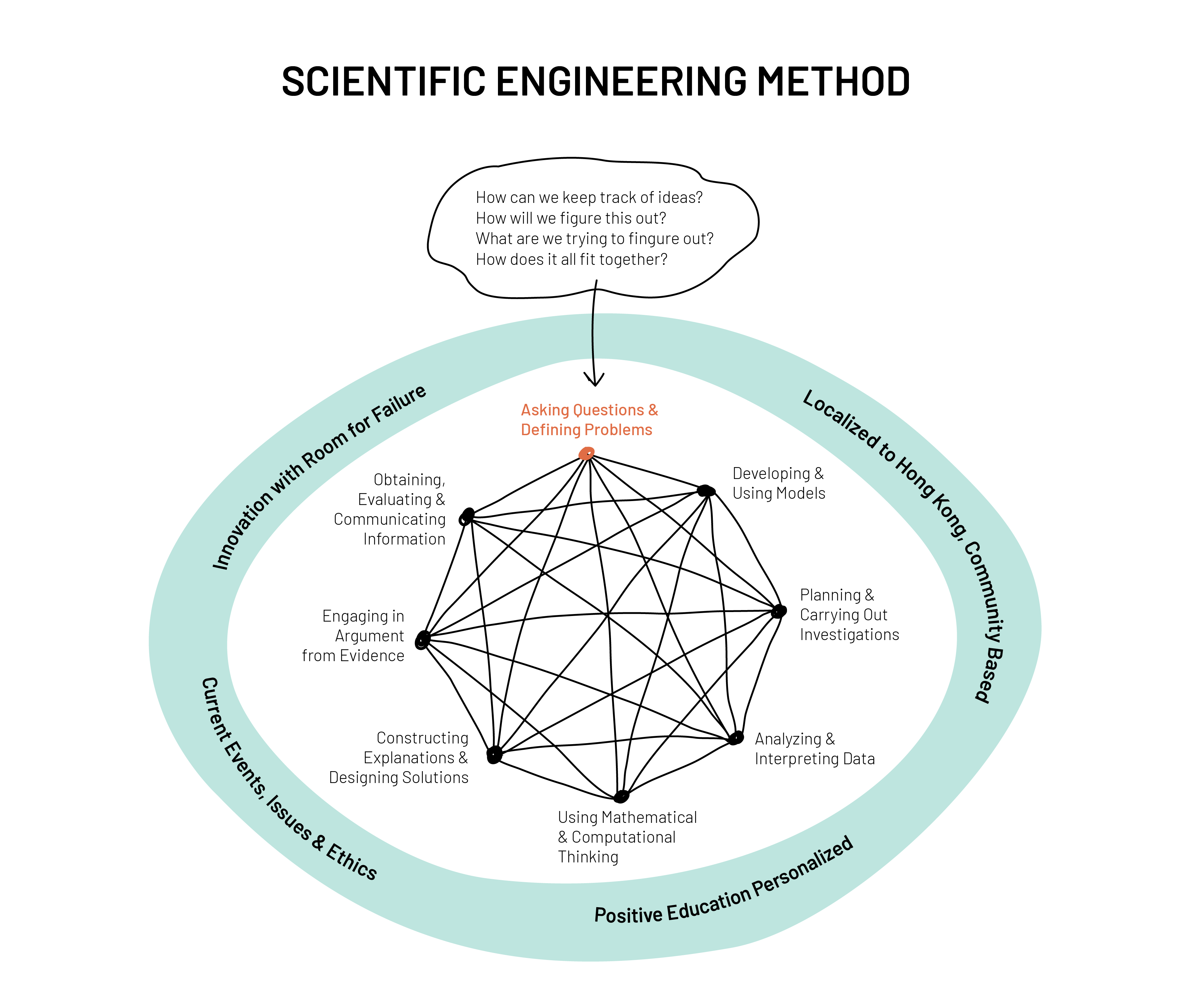STEM Program
STEM Program
In Bloom KKCA Academy’s STEM program, we follow the true spirit of an innovator as we venture into the unknown and do real experiments with Hong Kong as the backdrop and experimental ground. We collect raw data through our projects and contribute real data to the scientific community as we participate in citizen scientist projects. We know the power of science is more than just a score on a report card, but the accumulation of human discoveries that leverage technology and engineering to solve very human problems.
Our STEM program features localization of international standards, such as the Next Generation Science Standards, and real-world, problem-based learning with pathways to STEM fields and occupations. All learners will be expected to develop a basic understanding of the ten core technological competencies below.
Core Technological Competencies:
- Artificial Intelligence
- Material Science & Engineering
- Space
- Environmental Engineering
- Computer Graphics and User Interface Design
- Science and Data Acquisition
- Project Management
- Robotics and Control Technology
- Internet of Things and Digital Media Literacy
- Data Modeling and Simulation
Bloom STEM vs. Traditional STEM
Unlike a traditional STEM classroom, where science experiments are pre-designed, Bloom KKCA Academy focuses on the design of the experiment itself. Do learners understand the purpose of their experiments? Do learners know how to control their experiments so that they can isolate the effect of their treatments? What are the variables and dependencies? Science experiments should allow for critical thinking, and hypotheses should be formed through extensive pre-lab discussion, where students build on existing knowledge and learn to explain their chosen hypotheses. Throughout the experiment and analysis cycle, students use Harvard Project Zero’s visible thinking routines to make observations, analyze their data, and engage in group discussions.
Bloom STEM
The science curriculum is based on the Scientific-Engineering Method so that observational science, raw data collection, data analysis, and modeling are emphasized.
Traditional STEM
The science curriculum is still based on the age-old scientific method built around lab work conducted inside the classroom only. Learners are given a recipe of instructions to follow with a known outcome.
Bloom STEM
Teach computational thinking through everyday life routines, such as
- How to brush teeth properly is an algorithm.
- Learning how to take apart a toy step by step is decomposition.
- Listening to music and appreciating its repeating but spiraling melody is pattern recognition.
- Writing a summary for a newspaper article is abstraction.
Traditional STEM
- Not covering computational thinking at all unless there is programming class.
- Have students memorize what are the four components of computational thinking
- Learn to spell the words and memorize their definitions without giving examples.
- Give examples only in code or programming languages.
Bloom STEM
Coding through everyday life events
- Giving directions from home to school is a series of if-then-else cases
- Playing the “guess a number” game is like a while loop
- Comparing the English language grammar with pseudocode to understand the application of syntax.
- Playing programming-pair games where one student helps another blindfolded student navigate a map by giving a specific set of instructions.
Traditional STEM
Coding through screens only so that students become too “click-happy”.
- Relying on the computer to give instant feedback instead of working out the algorithm in their head.
- Constantly changing one simple variable or value and clicking “run” again and again, without truly understanding why it didn’t work the last time.
Bloom STEM
Makerspace products have real clients or users.
- Learners play different roles in the design process, such as designer, tester, finance manager, engineer, etc.
- Learners build confidence through feedback from real clients and users.
- A risk-taking attitude is reinforced due to the prototyping model within the Scientific-Engineering Method.
- Empathy is developed through the Stanford Design Process because you have to understand your client’s true pain-point in order to design a product that solves their problem.
Traditional STEM
Makerspace products are made for a letter grade or a score.
- Projects that are standardized by teachers for easy grading purposes.
- Students are often afraid to take risks and fear failing.
- Only a few students’ confidence is boosted while the rest of the class feels bad because it is graded on a curve.
- Product design is either done as directed by the teacher or the end-user is the student him/herself.
Standards-Based Structured Learning
The STEM Program draws from the Next Generation Science Standards (NGSS), a research-based curriculum developed and designed by Nobel Laureates along with a team of education professionals. Drawing on the important areas of current scientific research, the framework is an evidence-based foundation for standards that incorporate the new engineering method with the old scientific method. This new practice emphasizes observational science and applied science that allows for classroom learning experiences that stimulate students’ interest and readies them for the future.
The NGSS reflects the interconnected nature of science as it is practiced and experienced in the real world. NGSS identify (a) scientific and engineering practices (behaviors scientists and engineers engage in), (b) crosscutting concepts (concepts linking the different domains of science), and (c) core ideas in science that all K–12 students should master in order to prepare for success in college and 21st-century careers.
Students will observe scientific phenomena and learn to create raw data sets and record data in different charts and formats. They will then either apply the new data and patterns to a human need or problem. Older students will learn to input these data into computer simulations for further analysis. Creativity, critical thinking, computational thinking, and multimedia scientific communication are all naturally infused in the practice.

